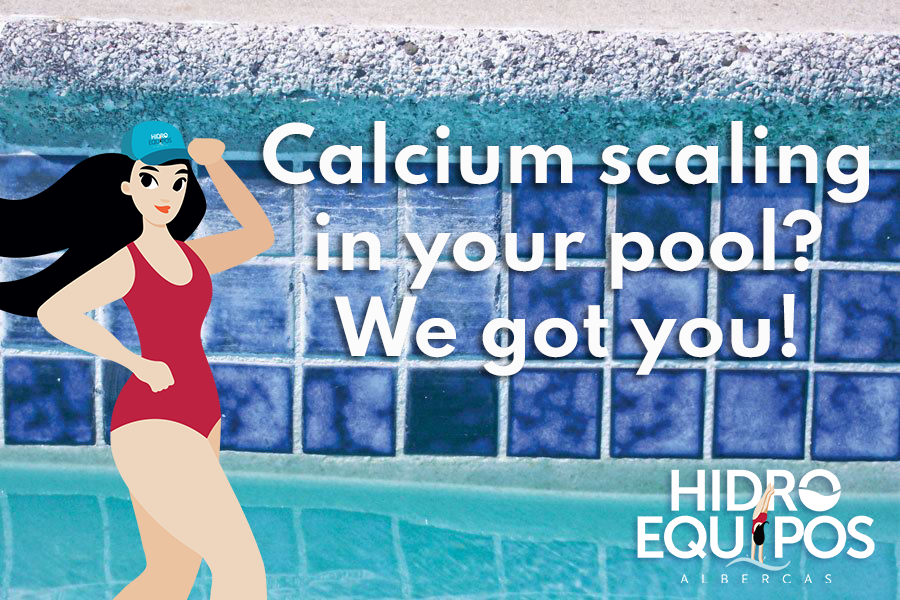Calcium scaling is an unsightly white to white-grey stain that forms on pool sides when a pool’s calcium levels and pH are imbalanced. Although it may be difficult to do, calcium scales can be removed — and preventative steps can be taken to keep them from reforming. If your pool has a buildup of calcium scaling, here’s how to identify what type of calcium you’re dealing with, treat it and stop it from forming again.
Two Types of Calcium Buildup
There are two types of calcium scales that form in pools: calcium carbonate and calcium silicate. Calcium carbonate is white and flaky, and it’s fairly easy to take off. Calcium silicate, in contrast, is white-grey and more difficult to move.
Additionally, because calcium silicate takes longer to form, pools that have calcium silicate buildup on their walls often also have scaling in their pipes. If your pool’s scaling proves to be calcium silicate, you may need to hire a professional to remove the deposits in your pool and its filtration system.
To see what type of calcium scaling has built up on your pool, place a few drops of muriatic acid on a deposit. Calcium carbonate will react with the acid and foam; calcium silicate will not.
Removing Calcium Carbonate Scaling
If your pool has calcium carbonate deposits, you can remove them with a pumice stone, stain eraser or scale remover.
A pumice stone should only be used on hard surfaces, such as tile and concrete. Simply use the stone to scrub the deposits. To prevent scratching, be sure to keep both the stone and the surface you’re scrubbing wet.
Many commercially available stain erasers will also remove calcium carbonate. These products are designed to be applied in a specific area, so they often attach to a telepole for easy application. If you decide to use a stain eraser, follow the manufacturer’s instructions.
Hidroequipos also carries calcium scaling treatments that are safe for all pool surfaces, including fiberglass, vinyl and steel pools. These use a machine where the pressure removes the calcium scaling, leaving your pool brand new!
Removing Calcium Silicate Scaling
The only reliable way to remove calcium silicate deposits is with a pumice stone — and a lot of hard work. These stains are notoriously difficult to scrub free.
If you have a vinyl or fiberglass pool, you won’t be able to use a pumice stone. It would scratch the pool. A calcium-scaling specific additive may remove the deposits, but these products can take months to dissolve calcium silicate. If you can’t use a pumice stone, you ought to contact us to use professional products that can quickly remove the deposits.
Preventing Future Calcium Scaling
As mentioned, calcium scaling is caused by an imbalance between the calcium levels and pH of your pool. Therefore, you can prevent future calcium buildup by addressing these two factors. You might want to do the following:
- Lower the pH level of your pool’s water, because pH can have a larger effect on calcium scaling than calcium levels do.
- Install an automatic pool cover that will reduce evaporation, because water that evaporates can leave behind calcium.
- Remove calcium through a reverse osmosis water treatment.
Don’t let calcium scaling detract from your pool’s beauty. If your pool has calcium deposits, identify what type of calcium they are by using a muriatic acid test and then remove them — even if doing so requires calling a pool service provider. Once they’re gone, take precautions to prevent them from returning, like lowering your pool’s pH and installing an automatic cover.




